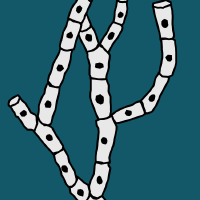Topic Menu
► Topic MenuTopic Editors




Redox in Microorganisms
Topic Information
Dear Colleagues,
The mechanisms by which microorganisms fight oxidative stress are essential for their survival in different environments. These include a large arsenal of molecular strategies to prevent or repair the oxidation of proteins, lipids, or nucleic acids, including antioxidants or enzymes that may rescue different vital components from irreversible oxidation. The molecular factors involved in these processes are relevant for pathogenesis, bioremediation, or industrial microbiology. Therefore, the study of redox biology in microorganisms is providing new insights into very diverse fields, and their translational potential is rapidly increasing. We invite you to submit your latest research findings or a review article on this Special Topic, which focuses on any aspect of the redox biology of microorganisms. We look forward to your contribution.
Dr. Michal Letek
Prof. Dr. Luis M. Mateos
Dr. Volker Behrends
Dr. Jesús Navas
Topic Editors
Keywords
- redox biology
- oxidative stress
- virus
- bacteria
- archaea
- protists
- fungi
- algae
- infection
- bioremediation
- ROS-generating antimicrobials
Participating Journals
| Journal Name | Impact Factor | CiteScore | Launched Year | First Decision (median) | APC |
|---|---|---|---|---|---|

Antibiotics
|
4.8 | 5.5 | 2012 | 13.7 Days | CHF 2900 |

Antioxidants
|
7.0 | 8.8 | 2012 | 13.9 Days | CHF 2900 |

Journal of Fungi
|
4.7 | 4.9 | 2015 | 18.4 Days | CHF 2600 |

Microbiology Research
|
1.5 | 1.3 | 2010 | 16.6 Days | CHF 1600 |

Microorganisms
|
4.5 | 6.4 | 2013 | 15.1 Days | CHF 2700 |

MDPI Topics is cooperating with Preprints.org and has built a direct connection between MDPI journals and Preprints.org. Authors are encouraged to enjoy the benefits by posting a preprint at Preprints.org prior to publication:
- Immediately share your ideas ahead of publication and establish your research priority;
- Protect your idea from being stolen with this time-stamped preprint article;
- Enhance the exposure and impact of your research;
- Receive feedback from your peers in advance;
- Have it indexed in Web of Science (Preprint Citation Index), Google Scholar, Crossref, SHARE, PrePubMed, Scilit and Europe PMC.
Related Topic
- Redox in Microorganisms, 2nd Edition (1 article)

